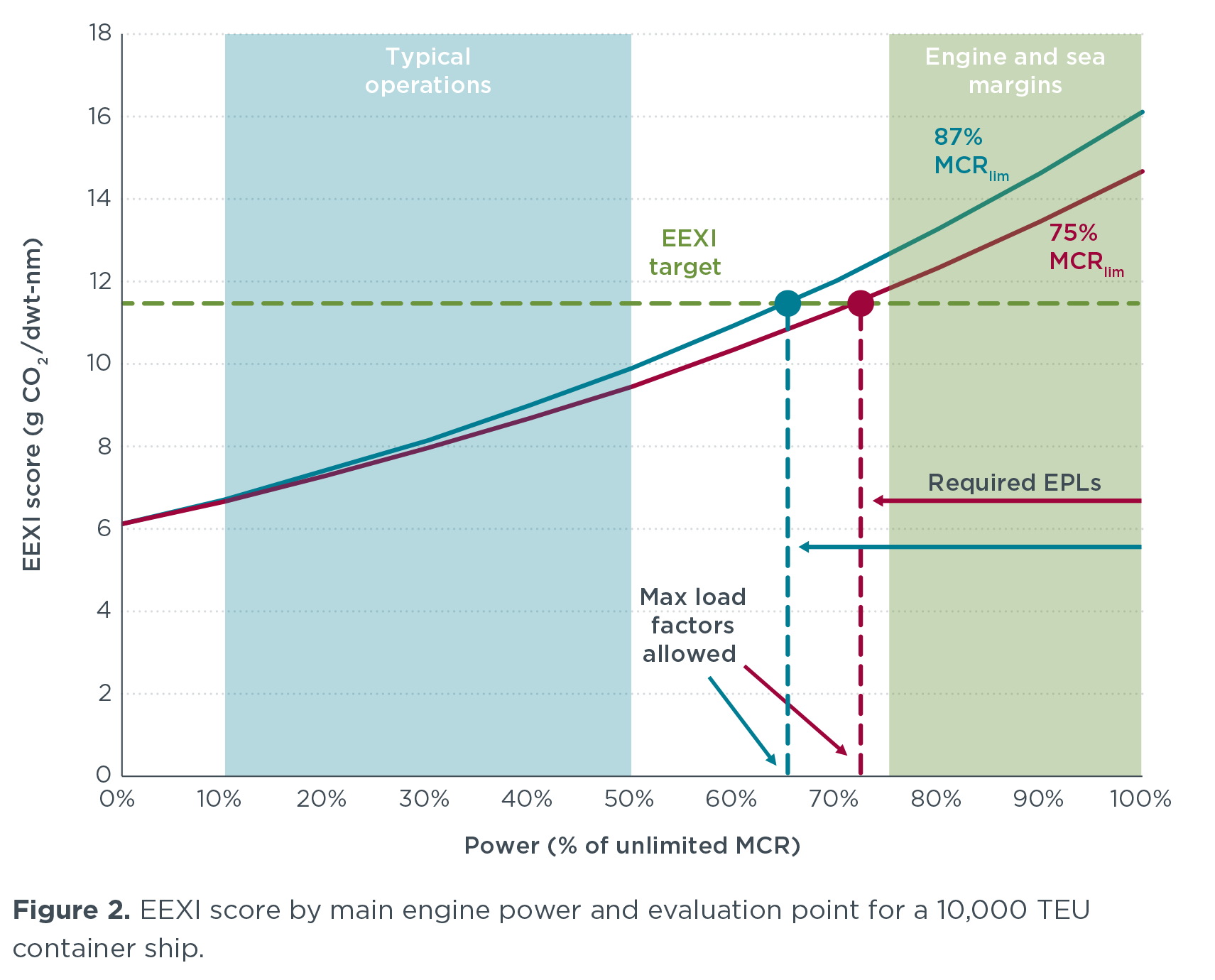Working Paper
Potential CO2 reductions under the Energy Efficiency Existing Ship Index
Proposed short-term measures to reduce the carbon intensity of international shipping fall into two categories: operational approaches and technical approaches. Based on the International Maritime Organization’s (IMO) latest “hybrid” proposal, ships will be required to adopt both approaches starting in 2023 to help meet IMO’s minimum 2030 carbon intensity goal. The proposed technical measure is Japan’s Energy Efficiency Existing Ship Index (EEXI), which would limit the amount of carbon dioxide (CO2) emitted per unit of transport supply. Main engine power limitation (EPL), a semi-permanent, overridable limit on a ship’s maximum power, is believed to be the easiest way for older ships to meet EEXI requirements.
This paper focuses on EPL and assesses the effectiveness of the proposed EEXI by using 2019 real-world ship operations and ICCT’s Systematic Assessment of Vehicle Emissions (SAVE) model. Results show that the EEXI as proposed would make only a small contribution to IMO’s climate goals, and reduce CO2 from the 2030 fleet by 0.7% to 1.3% from a baseline without the EEXI. This is due to the continuing prevalence of slow steaming, whereby most ships are being operated at engine loads that would be unaffected by the technical efficiency standard the EEXI sets. If the EEXI does not limit engine power below what ships already use, it will not result in reductions in ship speed or CO2
On average, in 2019, container ships, oil tankers, and bulk carriers were operated between 38% and 50% of their maximum continuous rating (MCR), well below the engine loads that would be allowable under the EEXI, which range from 65% to 77% MCR. The EEXI could be improved by evaluating it at an engine load point that takes account of a ship’s engine margin. As shown in the figure below, while evaluation at 75% limited MCR (MCRlim) would require EPLs of less than 30%, evaluating at 87% MCRlim would require somewhat higher (32% to 35%) EPLs. Those would roughly double CO2 reductions in 2030 and guard against a bounceback in emissions if ships speed back up in the future.

